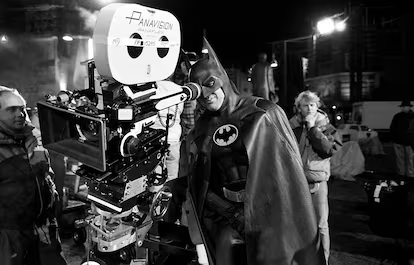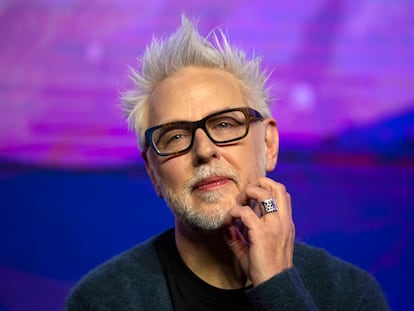Why fans didn’t want Michael Keaton as Batman in Tim Burton’s film
When Robert Pattinson was cast as Batman, hundreds of fans signed a petition asking to change the actor. That seems to be the story for every actor that played the character, starting with Michael Keaton.

The announcement of Michael Keaton’s return to the DC Universe as Bruce Wayne/Batman was met with excitement and anticipation from fans worldwide. The Academy Award-winning actor is starring next to Ezra Miller in The Flash, and he has become one of the main selling points, appearing predominantly in the posters and trailers for the movie. However, back in 1988, when Warner Bros. announced that the actor was going to play the character under Tim Burton’s direction, there was a massive backlash from comic book fans. Fifty thousand of them sent protest letters to the production company’s offices demanding a different casting.
“There was no Internet at the time, and it still broke the fucking Internet,” comic book fan and director Kevin Smith joked recently. Today, it’s common to see backlash on social media from fans when studios make casting announcements or decisions that they don’t feel are appropriate for their beloved franchises. Just three years ago, Robert Pattinson, who was cast as Batman for Matt Reeves’ project, caused angry responses from fans who created a Change.org petition calling for the decision to be reversed. Before him, Ben Affleck’s casting as the character for Zack Snyder’s Batman v Superman also caused backlash. So now it seems like a tradition for the character.
Although he seems perfect for the role now, Michael Keaton wasn’t even the studio’s first choice. Mel Gibson, Kevin Costner, Tom Selleck, Bill Murray, Harrison Ford, Denis Quaid, and Charlie Sheen were considered for the role. Burton offered Pierce Brosnan the role, but he refused, saying he had no interest in playing a comic book character. The director also considered Willem Dafoe. Keaton was suggested by producer Jon Peters, who said that he had the right “edgy, tormented quality” after seeing his performance in Clean and Sober, a dramatic departure from his early roles. Burton, who had directed the actor in Beetlejuice, agreed.

Cinefantastique, a fantasy and sci-fi film magazine, reported that screenwriter Sam Hamm, producer Michael E. Uslan, and creator Bob Kane (who was brought in as a consultant to try to appease fans) were dubious about Keaton’s casting, although Kane later praised Keaton’s performance and Burton’s vision.
Back in the ‘80s, Michael Keaton was known for his comedic roles in movies like Night Shift and Mr. Mom, portraying characters very different from the dark and philosophical tone of Batman’s comics of the decade. Fans thought Burton was going in a direction similar to the campy ‘60s TV show starring Adam West as the Caped Crusader. “Most people think of the TV show when they think of Batman,” said Maggie Thompson, then co-editor of The Comic Buyer’s Guide, in 1988. Comic book readers didn’t want that after Frank Miller, the visionary who created the acclaimed The Dark Knight Returns comics, changed how fans would perceive the character until this day.
“I’m at risk with Michael (Keaton) and Tim (Burton),” Peters confessed to The New York Times while the film was in production. “The image of Batman is a big model type, but I wanted a guy who’s a real person who happens to put on this weird armor. A guy who’s funny and scary. Keaton’s both. He’s got that explosive insane side.” Fans were also skeptical about Burton because of the campiness of Pee-wee’s Big Adventure, his first feature.
According to Kevin Smith, when Warner released the first promotional photo for Batman, where Michael Keaton appeared in costume next to his Batmobile, “the whole world shut up.” The picture made it clear that the film was going in a darker direction, more faithful to the era’s comics. When the film was released on June 23, 1989, Keaton’s performance and Burton’s vision were met with acclaim from critics, moviegoers, and comic book fans (although some were unhappy with some of the script decisions). Batman was also financially successful, becoming the fifth-highest-grossing film in history at the time of its release, and Keaton’s name became synonymous with Bruce Wayne and Batman.
The Washington Post review of the movie hailed the actor: “Michael Keaton was an upsetting choice, but it’s a choice brilliantly redeemed in realization. What Keaton brings to his characterization of both Batman and his millionaire-playboy alter ego, Bruce Wayne, is a quality of coiled concentration, a wary vigilance. In his Batsuit, Keaton’s movements are stylized, almost robotic, and the stiffness of movement carries Arthurian associations, as if he were indeed a dark knight, armored for battle.”
Years later, after the success of the film and its sequel, Warner Bros. decided they wanted a lighter approach to Batman for its third movie. They asked Tim Burton to step down as a director, after which Keaton also decided to leave the film, rejecting $15 million.
Val Kilmer was then cast as the character, which generated mixed opinions. Although some critics later praised his performance, the movie was panned for being campy and avoiding Burton’s original vision. George Clooney donned the cape in the fourth movie before Christian Bale was selected by Christopher Nolan for his reboot Batman Begins. Fans weren’t convinced of Bale based on his physique. Since then, like Keaton, he has been considered one of the best Batmans of all time.
Sign up for our weekly newsletter to get more English-language news coverage from EL PAÍS USA Edition
Tu suscripción se está usando en otro dispositivo
¿Quieres añadir otro usuario a tu suscripción?
Si continúas leyendo en este dispositivo, no se podrá leer en el otro.
FlechaTu suscripción se está usando en otro dispositivo y solo puedes acceder a EL PAÍS desde un dispositivo a la vez.
Si quieres compartir tu cuenta, cambia tu suscripción a la modalidad Premium, así podrás añadir otro usuario. Cada uno accederá con su propia cuenta de email, lo que os permitirá personalizar vuestra experiencia en EL PAÍS.
¿Tienes una suscripción de empresa? Accede aquí para contratar más cuentas.
En el caso de no saber quién está usando tu cuenta, te recomendamos cambiar tu contraseña aquí.
Si decides continuar compartiendo tu cuenta, este mensaje se mostrará en tu dispositivo y en el de la otra persona que está usando tu cuenta de forma indefinida, afectando a tu experiencia de lectura. Puedes consultar aquí los términos y condiciones de la suscripción digital.
More information
Archived In
Últimas noticias
Most viewed
- Reinhard Genzel, Nobel laureate in physics: ‘One-minute videos will never give you the truth’
- Oona Chaplin: ‘I told James Cameron that I was living in a treehouse and starting a permaculture project with a friend’
- Pablo Escobar’s hippos: A serious environmental problem, 40 years on
- Chevy Chase, the beloved comedian who was a monster off camera: ‘Not everyone hated him, just the people who’ve worked with him’
- Why we lost the habit of sleeping in two segments and how that changed our sense of time











































